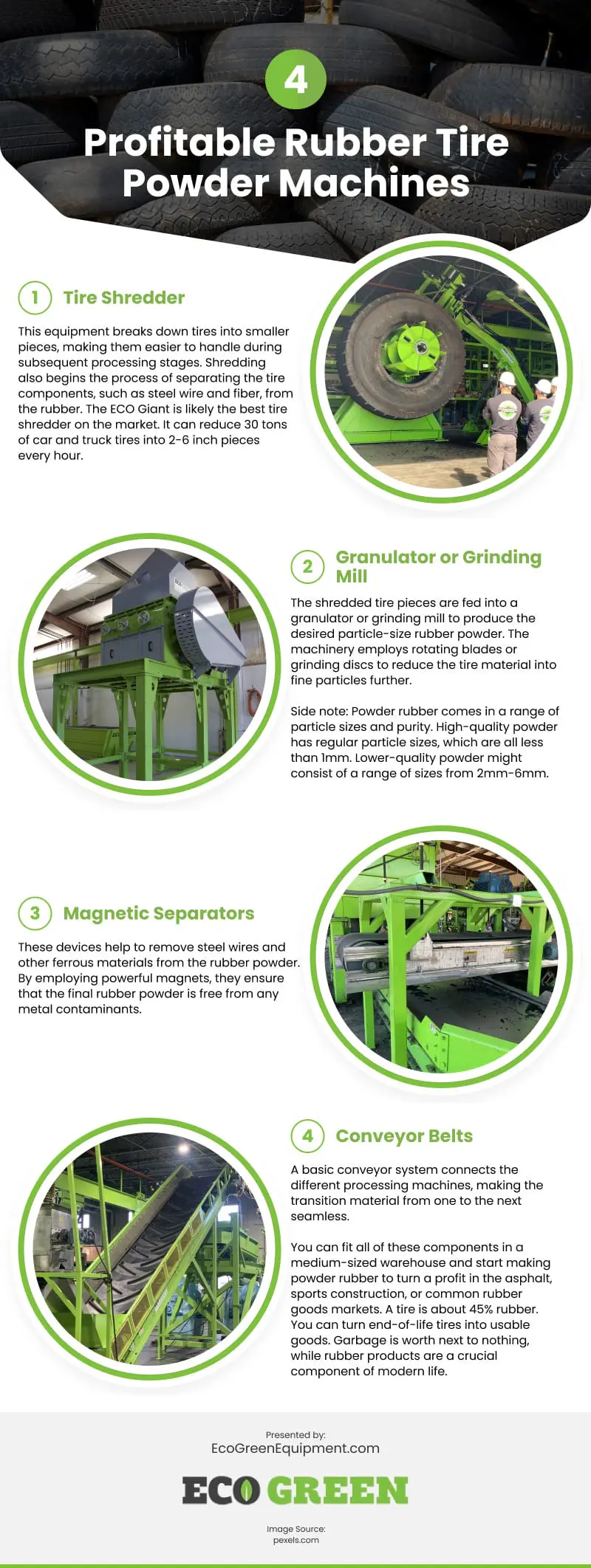
In the realm of fitness, a plethora of advertisements inundates us with images of protein powder miraculously transforming average bodies into physiques reminiscent of Greek gods. Similarly, the enticing aroma of freshly baked blueberry muffins, thanks to the magic of baking powder, is a sensory experience many are familiar with. For adventure enthusiasts, the allure lies in the snowy slopes, where the magic ingredient for an unforgettable day is undeniably powder if you’re a skier.
However, in the world of tire recycling, the focus on powder takes a different form. Here, powder is not a supplement or a baking aid but a valuable end product derived from the meticulous processing of tires. Through grinding and crushing, tires undergo a transformation, and the resultant powder, akin to fine black volcanic sand, becomes a lucrative commodity. Much like the magical properties of protein or baking powder, rubber powder possesses unique characteristics that render it indispensable to various industries, making it a profitable venture for tire recycling plants.
The versatility of rubber powder is evident in its diverse applications, contributing significantly to different sectors:
Asphalt Modification:
Incorporating rubber powder into asphalt mixtures enhances performance by improving elasticity, reducing cracking, and increasing resistance to temperature variations. This modification proves beneficial in road construction, ensuring the creation of more durable and resilient road surfaces. Moreover, it adds a layer of forgiveness in case of motorcycle accidents, trips, or falls.
Sports Surfaces:
Rubber powder finds its place in artificial turf and rubberized playground surfaces, enhancing shock absorption and minimizing the risk of injuries during sports activities. Its resilience and weather resistance make it ideal for outdoor recreational areas, with no scientific evidence supporting concerns about health threats from powder rubber surfaces.
Manufacturing of Rubber Products:
Rubber powder serves as a valuable raw material in the production of various rubber-based goods, including mats, gaskets, seals, and flooring materials. Utilizing tire rubber in manufacturing reduces reliance on virgin rubber, promoting a more sustainable approach.
Understanding the machinery involved in the tire-to-powder conversion process is crucial:
1. Tire Shredder
Breaks down tires into smaller, manageable pieces, initiating the separation of components like steel wire and fiber from the rubber. Advanced models like the ECO Giant can process 30 tons of tires per hour.
2. Granulator or Grinding Mill
Further reduces shredded tire pieces into the desired particle-size rubber powder using rotating blades or grinding discs.
3. Magnetic Separators
Remove steel wires and other ferrous materials from the rubber powder, ensuring a final product free from metal contaminants.
4. Conveyor Belts
Connect the processing machines, facilitating the smooth transition of material from one stage to the next.
These components, when efficiently arranged in a medium-sized warehouse, enable the production of high-quality powder rubber for profitable entry into markets such as asphalt, sports construction, or general rubber goods. With approximately 45% of a tire being rubber, transforming end-of-life tires into usable goods not only minimizes waste but also capitalizes on the indispensability of rubber products in modern life. Investing in tire-specific shredders and granulators is essential to refine the process and produce top-quality powder, enhancing bargaining power when negotiating selling prices. While various general crumbling machines exist, specialized equipment ensures efficiency in separating rubber from other tire components and prevents clogging.
source: https://ecogreenequipment.com/dont-underestimate-the-profit-potential-of-rubber-powder/
Comments
Download this infographic.
